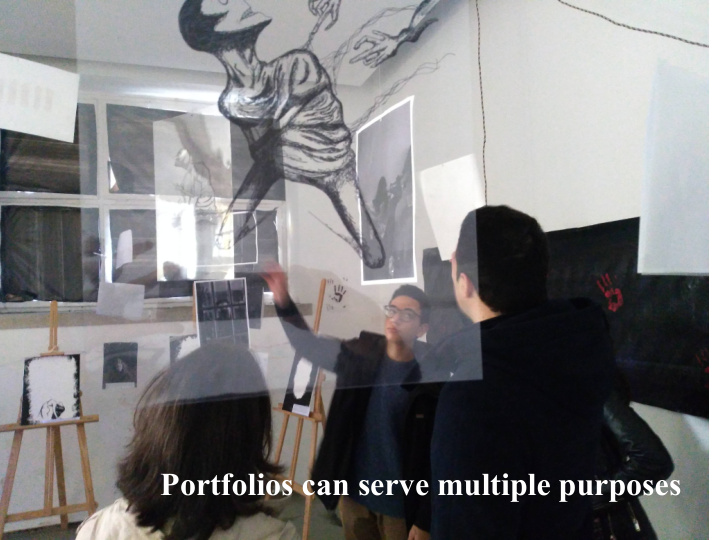



Portfolios can serve multiple purposes
• They can support learning, • play an assessment role, • or support employment.
PORTFOLIOS Professional Professional Purposes Educational Purposes Purposes Educational Purposes
PORTFOLIOS for Professional Purposes : Professional Purposes : Selection: Selection: to select the best professionals , to obtain awards; a job, a promotion. Evaluation: to monitor professional achievement Reflective: Reflective: self-evaluation of own practices for continous professional development ( long life learning) Presentation Presentation: to display a project for an audience of (buyers, critics, chiefs; companies, etc.) to obtain a command (architecture; plastic arts, design area, etc.)
PORTFOLIOS in EDUCATION Learning: To monitor student's progresses; learning self-regulating Assessment: End course or end module level to obtain a grade or a diploma Selection : to select the best students
TOOLS FOR PERSONAL GROWTH Developing personal portfolios incorporates many different technology tools, But it is also a process of self-reflection and personal growth. The process is very personal - a story of self that involves a great deal of self- reflection and thought.
WHAT IS A PORTFOLIO? A portfolio is a purposeful collection of student work that exhibits the student's efforts, progress, and achievements in one or more areas..
WHAT IS A PORTFOLIO? The collection must include student participation in selecting content, the criteria for selection, the criteria for judging merit, and evidence of student self-reflection.
types of portfolios • the working portfolio, which contains projects the author is currently working on or has recently completed.
types of portfolios • the display portfolio, which showcases samples of the best work.
types of portfolios • the assessment portfolio, which presents work demonstrating that the author has met specific learning goals and requirements.
Some guidelines for developing portfolios :
Collection: the gathering of items based on the portfolio's purpose, audience, and future use.
Reflection: statements about the significance of each item and of the collection as a whole.
Direction: a review of the reflections that looks ahead and sets future goals.
Connection: the creation of hypertext links and publication, providing the opportunity for feedback.
? W O H
Demonstrations or displays in the portfolio include an explanation of the context of the material, where the demonstration was done, why it was done (its purpose), and what learning or capacities are demonstrated through its inclusion.
s o i l s o o f i t l r o o f P t r o r e P p c a a i P i n d o e M r t c x e i l M E
ELECTRONIC PORTFOLIOS – The power of a digital portfolio is that it allows different access to different artifacts. The user can modify the contents of the digital portfolio to meet specific goals. As a student progresses from a working portfolio to a display or assessment portfolio, he or she can emphasize different portions of the content by creating pertinent hyperlinks.
"For example," Barrett notes, "a student can link a piece of work to a statement describing a particular curriculum standard and to an explanation of why the piece of work meets that standard. That reflection on the work turns the item into evidence that the standard has been met." (http://www.educationworld.com/a_tech/tech/tech111.shtml)
• "Many people emphasize the electronic side of electronic portfolios," Barrett said. "I tend to emphasize the portfolio side. People often approach electronic portfolios as a multimedia or Web development project and lose sight of the portfolio component. Reflection, however, plays a critical role in the development of a portfolio. ( In: Barret ; An electronic portfolio is not a digital scrapbook ) • http://www.educationworld.com/a_tech/tech/tech111.shtml
http://www.youtube.com/watch?v=OWJqJ8NhQIc JISC - Stories of e-Portfolio Implementation - University of Edinburgh
http://saharivileuphana.wixsite.com/saharivi1
Recommend
More recommend